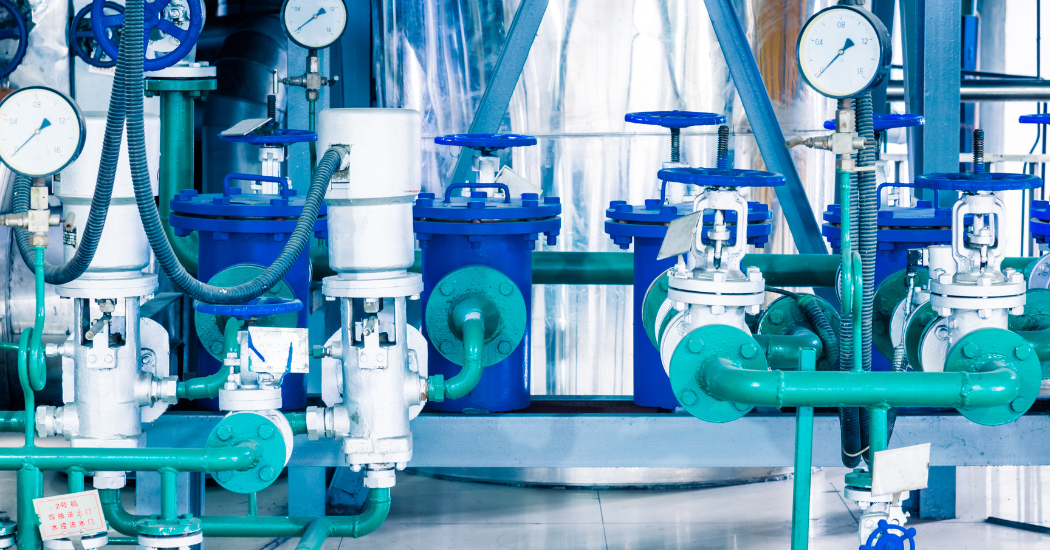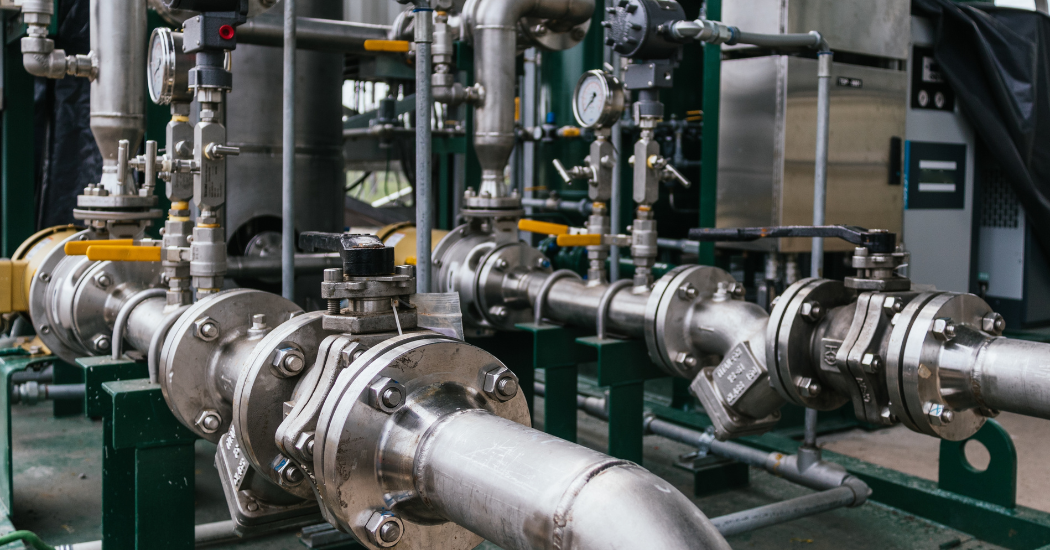Valve selection takes into account several chemical and physical characteristics of fluids. These characteristics impact valve performance and influence flow rates, valve wear and tear, and leakage levels. Viscosity is one of the vital properties engineers must evaluate when selecting industrial valves.
Viscosity, which measures the resistance of service fluid to flow, affects pressure drop, valve responsiveness to actuator inputs, trim wear rates, and efficiency of pumps. Here is why engineers must calculate fluid viscosity when selecting process valves.
Viscosity effects on the Reynolds number
The Reynolds number is a parameter that describes if the fluid flow is laminar or turbulent. Fluid viscosity is vital for calculating the Reynolds number and plays a role in valve selection since the flow regime influences the performance characteristics of valves.
Valve manufacturers specify the flow coefficient (Cv) of each valve, making it easier to choose valves for turbulent flow. Ball valves have high flow coefficient values and are preferable for piping systems with turbulent flow regimes.
Fluid viscosity (kinetic or dynamic) is beneficial for countering the harmful effects of the turbulent flow around the valve trim. The Reynolds number of a service fluid decreases as the kinematic viscosity of the service fluid increases and vice versa. Fluids with low kinematic viscosity flow easily through valves with minimal erosive effects due to low cavitation. Highly viscous fluids are sluggish, have lower mechanical efficiencies and increase fluid erosion in piping systems.
Viscosity influence the pressure drop inside the valve’s body
The parallel motion of fluid layers does not induce the same local pressures as swirls and eddies in turbulent flow regimes. In the fully developed laminar flow, the propulsive force at the controlling orifice is a function of the pressure drop (Δp). In contrast, in the case of turbulent flow, the propulsive force is related to the square root of Δp.
Valves increase the roughness of the piping system and the proportion of shear forces leading to higher pressure drops. The pressure drop across the valve body is higher for viscous service fluids traveling at high speeds. The desired pressure drop should account for fluid viscosity to determine the correct valve sizes, trim style and construction materials required to maintain frictional resistance at acceptable levels and control pressure drop across valves. Piping systems transporting highly viscous fluids often require specially-engineered control valves different than those typically applicable to their low-viscosity counterparts.
 Selection of the appropriate valve according to fluid viscosity
Selection of the appropriate valve according to fluid viscosity
Besides defining the operating pressure, the fluid’s viscosity determines the suitable valve type since highly viscous service fluids and slurries require a minimal pressure drop across the valve body to prevent plugging. For example, globe valves that induce significant pressure drops, widely used for throttling purposes, are not a good option for controlling the flow of highly viscous fluids. Alternatively, ball valves that generate minimal pressure drops are used regularly to control the flow of highly viscous fluids in the petrochemical industry. There are specially designed on/off knife gate valves for extremely thick fluids that minimize the friction force between the liquid and the knife gate.
Valves for viscous fluid service should minimize frictional losses that offset the volumetric efficiency of pumps. They should provide durable fluid control despite the erosive effects of fast-moving viscous fluids. For viscous fluid control, one should prioritize the selection of valves with high-pressure recovery factors, like solenoid valves for example, over alternatives that offer low-pressure recovery factors, like butterfly-type valves.
The viscosity change across the operating temperature range
Viscosity is a temperature-dependent parameter -as temperature increases, the viscosity of liquids rapidly decreases. Therefore, it is necessary to determine the viscosity values over the operating temperature range of the application for precise tuning of control valves. Viscosity may be determined either empirically or experimentally. Engineers use the viscosity index to estimate fluid characteristics at different temperatures. A fluid with a high viscosity index experiences wide viscosity fluctuations as temperature changes compared to one having a low viscosity index.
Valves for fluids whose viscosity fluctuates with temperature should provide adequate sealing and similar performance characteristics over the piping system’s operating temperature range. The viscosity index is vital when dealing with piping systems conveying hydraulic and lubricating oils. The valve and sealing materials should have adequate resistance to fluid corrosion at varying process temperatures.
Fluids with low viscosity indices should use robust sealing materials to prevent leakages around the valve body when high temperatures reduce their resistance to flow. The valve should retain responsiveness to actuator controls as the viscosity fluctuates with rising or decreasing temperatures.
Determination of fluid type and its behavior based on its viscosity
Fluids are classified based on their viscosity into the following groups: Ideal fluid, Real fluid, Newtonian fluid, Non-Newtonian fluid, and Ideal plastic fluid. During the passage through the orifice, the different fluids experience different shear stress, consequently affecting the velocity gradient.
Determining valve types based on fluid type and behavior is critical for evaluating the performance of different industrial valves when conveying viscous fluids at fully or partially open positions. This is also beneficial for defining fluid velocities and valve sizes at which the service fluid changes from laminar flow to turbulent flow regime and its impact on valve performance, durability and responsiveness.
Final Words
Engineers must evaluate several variables when selecting valves and look beyond flow rates and chemical characteristics. They should consider how fluid viscosities fluctuate under different flow conditions. When using viscosity to size valves, select a trim design that counters the erosive effects of the service fluid. Choose valves providing higher volumetric efficiencies to optimize pump sizes and reduce energy consumption costs. And if there are any doubts left about the correct choice, it is always a good idea to consult with your valve supplier.
About the author
Gilbert Welsford Jr is the founder of ValveMan.com and a third-generation valve entrepreneur. He has learned valves since a young age and has brought his entrepreneurial ingenuity to the family business in 2011 by creating the online valve store – ValveMan.com. Gilbert’s focus is building on the legacy his grandfather started, his father grew, and he has amplified.
Read more about Valves.





Comments